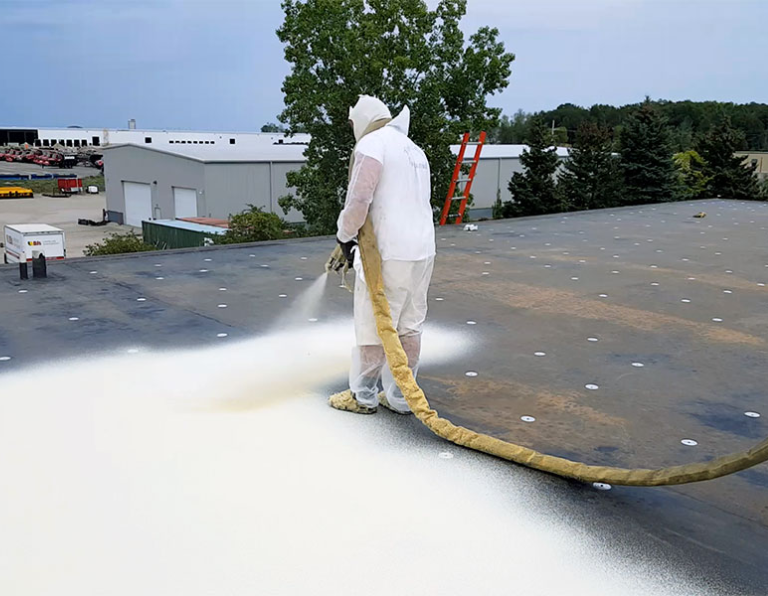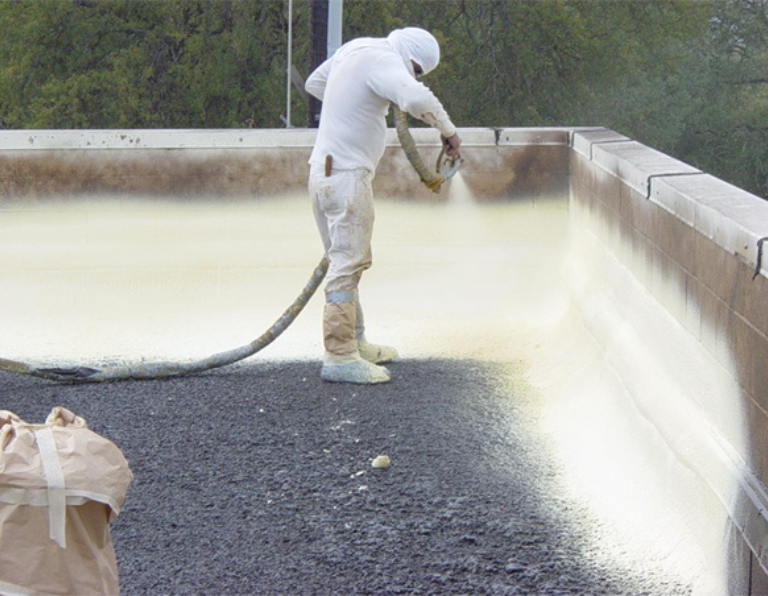Spray foam roofing systems are widely used for their high insulation properties and seamless application. However, their ability to withstand thermal cycling stress—repeated heating and cooling cycles—affects their long-term performance. Thermal cycling can lead to material fatigue, affecting the durability and efficiency of the roof. This article evaluates how spray foam roof systems respond to thermal stress and highlights the key factors that should be considered when choosing such systems.
Understanding the effects of thermal cycling on spray foam roofs is essential for making informed decisions about roof longevity and performance. We will explore the science behind thermal stress, compare different spray foam systems under these conditions, and provide technical insights to guide maintenance and selection.
Impact of Thermal Cycling on Spray Foam Roofs
Thermal cycling stress occurs when a material repeatedly expands and contracts as it is exposed to varying temperatures. This expansion and contraction can cause fatigue in the materials, leading to cracks, tears, or eventual failure if the system is not designed to handle such stress. Spray foam roofing while durable, can suffer from thermal cycling if not properly formulated or applied.
In a typical roof installation, thermal cycling can be induced by:
- Day-to-night temperature fluctuations.
- Seasonal temperature variations.
- Heat from building interiors or machinery.
Understanding how spray foam reacts to thermal cycling is critical in predicting its longevity, especially in regions with extreme temperature shifts.
Types of Spray Foam Roof Systems
Spray foam roofing systems come in two main types: open-cell and closed-cell spray foam. Both types offer different levels of resistance to thermal cycling, which affects their suitability for various applications.
Open-Cell Spray Foam
Open-cell spray foam is less dense, which allows for more air pockets within the foam. While this provides better insulation in some conditions, it is less resistant to moisture and thermal cycling stress compared to closed-cell spray foam.
Closed-Cell Spray Foam
Closed-cell spray foam is denser and more rigid, providing higher resistance to moisture and thermal cycling. It is better suited for regions with more significant temperature changes and for applications where long-term durability is critical.
Comparison Table: Open-Cell vs Closed-Cell Spray Foam Under Thermal Stress
| Property | Open-Cell Spray Foam | Closed-Cell Spray Foam |
| Density | Lower density, more air pockets | Higher density, fewer air pockets |
| Insulation Efficiency | Good, but slightly less effective under extreme conditions | Excellent, particularly in extreme conditions |
| Moisture Resistance | Lower resistance, can absorb moisture | High resistance, moisture repellent |
| Thermal Cycling Resistance | Less resistant to thermal cycling | More resistant to thermal cycling |
| Cost | Less expensive | More expensive |
| Application Areas | Suitable for indoor or mild climates | Suitable for harsh, extreme climates |
Technical Specifications of Spray Foam Roofs
When evaluating fspray foam roof systems, the technical specifications are essential to understand how each system behaves under thermal cycling stress. Below is a breakdown of key specifications relevant to this evaluation.
Technical Specifications Table
| Specification | Open-Cell Spray Foam | Closed-Cell Spray Foam |
| Thermal Conductivity (K-value) | 0.12 – 0.14 W/m·K | 0.18 – 0.20 W/m·K |
| Expansion Rate | Higher due to lower density | Lower due to higher density |
| Compressive Strength | Lower (2-3 psi) | Higher (10-15 psi) |
| R-value per Inch | 3.5 – 4.0 | 6.0 – 7.0 |
| Moisture Absorption | High (can absorb up to 30% of its weight) | Low (less than 5%) |
| Fire Rating | Lower (Class 2) | Higher (Class 1) |
Things to Consider Before Making a Decision
When choosing a raleigh excel spray foam roof system, several factors must be considered to ensure it can handle thermal cycling stress effectively. Here are the main factors to keep in mind:
- Climate: Regions with large daily or seasonal temperature fluctuations require systems that are more resistant to thermal cycling. Closed-cell spray foam is often preferred in such climates.
- Roof Design: The structure and design of the roof can impact how the spray foam system responds to thermal stress. Considerations like roof slope and exposure to sunlight are important.
- Budget: While closed-cell spray foam offers superior resistance to thermal cycling, it comes at a higher cost. Balance the budget with the desired performance levels.
- Longevity: Choose a spray foam system with the best long-term performance based on your climate and roof exposure. More resistant systems will reduce the frequency of repairs and maintenance.
Bonus Tip: Choose Spray Foam Based on Specific Roof Needs
Opting for closed-cell spray foam may be an investment upfront, but in harsh climates, its higher resistance to thermal cycling can save money on maintenance over time.
Common Questions About Spray Foam Roof Systems Under Thermal Cycling Stress
1. How does thermal cycling affect spray foam roofs?
Thermal cycling causes expansion and contraction, which can lead to cracks, shrinkage, or deterioration of the spray foam material over time. Closed-cell spray foam is more resistant to these effects due to its denser structure.
2. Can spray foam roofs be repaired if they suffer from thermal cycling stress?
Yes, spray foam roofs can be repaired. In most cases, minor cracks or damage can be patched with additional foam, but severe damage may require full replacement.
3. Is closed-cell spray foam always better for thermal cycling stress?
Closed-cell spray foam is generally better for high thermal cycling stress due to its higher density and moisture resistance. However, the suitability depends on specific conditions such as climate and roof design.
4. How often should a spray foam roof be inspected for thermal damage?
It’s recommended to inspect spray foam roofs annually, especially in climates with extreme temperature variations. Look for signs of cracking, shrinkage, or water infiltration.
5. Does the thickness of spray foam impact its resistance to thermal cycling?
Yes, thicker foam layers provide better insulation and resistance to thermal cycling. However, excessive thickness can increase the cost without providing significant additional benefit in some conditions.
Make the Right Decision
When evaluating spray foam roof systems under thermal cycling stress, understanding how the material responds to temperature fluctuations is key to making a sound decision. Assess your specific climate, roof design, and budget to determine the best raleigh excel spray foam insulation system for your needs. Remember, closed-cell spray foam offers superior performance under extreme conditions but comes with a higher price tag, while open-cell spray foam can suffice for less harsh climates at a more affordable cost.








